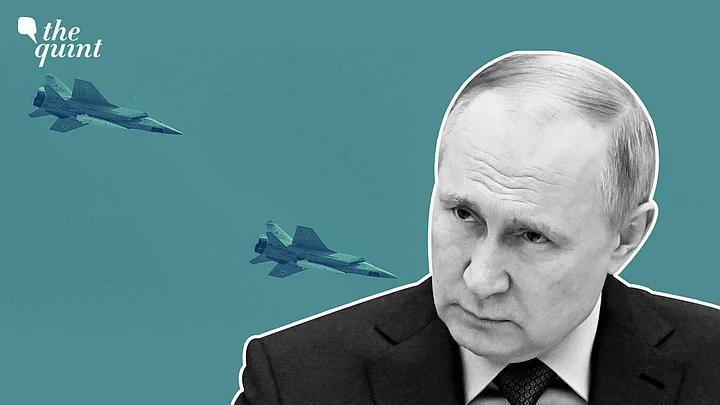A couple of developments have taken place in Ukraine in the past four days, especially with respect to hypersonic missiles.
Russia, on 19 March, stated that it had used the advanced Kinzhal hypersonic missiles for the first time, and fired it at ammunition storage sites in western Ukraine.
Then, on 20 March, the Russian military claimed to have used another hypersonic missile from the airspace over Crimea to target a fuel depot in Mykolaiv, in southern Ukraine.
Confirmation of these attacks was provided by the Ukrainian military, but it could not verify whether hypersonic missiles had been used by the Russian forces.
The United States (US) intel has also stated that it can neither confirm nor deny Russia's use of these weapons.
US President Joe Biden, however, claimed that Russian forces "launched their hypersonic missile because it's the only thing they can get through with absolute certainty," as quoted by Reuters.
So, what exactly are hypersonic missiles? And what makes them so different from other missiles that they are being talked about so much?
Low Altitude Factor
Hypersonic missiles are basically missiles travelling at hypersonic speed. That means they travel at a speed that is five times more than the speed of sound, that is, it flies at least at the speed of Mach 5 (1.6 kilometers per second).
A report published by the Congressional Research Service (CRS), stated that countries like Russia, China and the United States possess the most advanced hypersonic weapons programmes, and others like Japan, Germany, India, and Australia are in pursuit of the same.
It is not, however, their speed that makes them so dangerous. After all, even long-range ballistic missiles can reach similar velocities. The distinct feature of hypersonic missiles is their ability to maintain high velocity at lower altitudes.
This combination of high velocity and low altitudes make it harder for air-defence systems to detect hypersonic missiles and take them down.
Even the CRS report explains that the anti-missile radars cannot detect hypersonic missiles until very late into their flight.
This means that those on defensive duties would have only a few seconds to react between the moment that their target is acquired and the moment the missile hits its own target.
Therefore, these qualities of hypersonic missiles make it very hard to intercept them.
The CRS report also notes that the current command and control model that the US military has for missile defence would not be able to process the data fast enough to neutralise an incoming hypersonic missile.
Two Types of Hypersonic Missiles
There are two types of hypersonic missiles:
Hypersonic cruise missiles
Hypersonic gliding vehicles
The cruise missiles are powered by rockets or jets.
On the other hand, hypersonic missiles can also be released on unpowered hypersonic glide vehicles (HGVs), which can fly lower and faster, making them quite unpredictable for the enemy.
Russia's Hypersonic Missiles
Russia's hypersonic missile is known as the Kinzhal missile. When it was first unveiled in 2018, Russian President Vladimir Putin had called it an "invincible" weapon.
It was test-fired in July the same year, launched from a modified MiG-31, a supersonic interceptor aircraft introduced in the Soviet Union in the 1980s.
The CSR report claimed that the missile reached a target about 500 miles away from the launch location.
The media in Russia has claimed that the Kinzhal's speed can reach Mach 10, that is, 10 times the speed of sound. It also has a range of 2,000 kilometre.
It could be equipped with a nuclear warhead and could devastate ground and naval targets, while manoeuvring through sophisticated defence systems.
Some analysts, however, are sceptical about the hullabaloo surrounding the Kinzhal.
They point out that it is merely a modification of the Iskander missile, which is a short-range ballistic missile already being used extensively by the Russian forces in Ukraine.
The Iskander missile can also reach hypersonic speeds, but as explained above, it cannot fly at a low enough altitude in order to avoid detection by the missile defence systems.
Military experts and defence officials in the US and the United Kingdom, therefore, theorise that the Kremlin's gloating with respect to its hypersonic missiles is aimed at propaganda, in order to scare Ukraine and the West.
The fact that Russia had to resort to this implies that the war is not going according to Putin's plan, especially given the fact that his air force still does not control the skies over Ukraine. You can read more about that here.
(At The Quint, we question everything. Play an active role in shaping our journalism by becoming a member today.)
